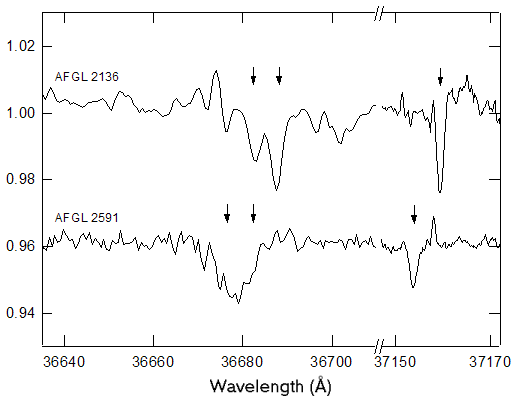OBSERVATIONAL PROJECTS - CHICAGO
Survey of H3+ in Dense Interstellar Clouds
Although the infrared spectrum of H3+ had been detected
in the laboratory in 1980, it was not until the mid-1990s that the
sensitivity of astronomical infrared spectrographs became sufficient to
detect the weak (~1%) absorption lines of interstellar
H3+. The first detection was made in early 1996
(at which time I was a first-year graduate student) by Tom Geballe and
Takeshi Oka using the United Kingdom Infrared Telescope (UKIRT). This
discovery immediately confirmed the general picture of ion-neutral
chemistry in dense "molecular" clouds that was formulated in the
early 1970s by Herbst & Klemperer and, independently, by Watson.
This initial detection immediately led to the study of a sample of dense cloud sightlines, to confirm and extend the result. This program served as my introduction to observational astronomy, and involved observations with CGS4 at UKIRT as well as with the then-new Phoenix spectrometer at Kitt Peak. This survey led to the detection of H3+ in a handful of dense clouds, and the ability to infer the path length, number density, and temperature of these clouds. It also led, ultimately, to the surprise detection of H3+ in diffuse clouds (more details).

References:
| B. J. McCall, T. R. Geballe, K. H. Hinkle, and T. Oka
Observations of H3+ in Dense Molecular Clouds Astrophysical Journal, 522, 338 (1999) |
LINK
PS |
| B. J. McCall, K. H. Hinkle, T. R. Geballe, and T. Oka
H3+ in Dense and Diffuse Clouds Faraday Discussions, vol. 109, 267-280 (1998) |
LINK
PS |
|
|
|
|